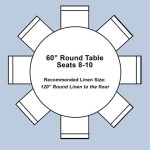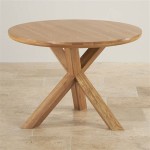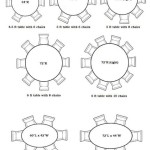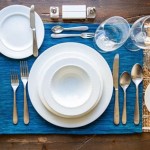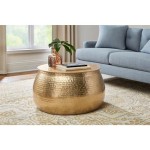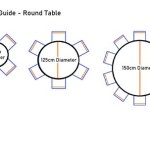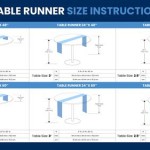What Is The Traditional Seating Plan For Wedding Head Table?
The head table, a focal point at any wedding reception, serves as the designated space for the wedding party and often, their significant others. Its arrangement, a blend of tradition and evolving etiquette, dictates the visual dynamic of the room and the flow of interactions throughout the event. While modern couples often personalize their seating plans, understanding the traditional head table arrangement provides a solid foundation for informed decision-making.
The traditional head table arrangement is characterized by its linear formation, usually a long rectangular table positioned to offer optimal visibility to all guests. The bride and groom occupy the center positions, serving as the focal point of the entire setup. Flanking them are members of the wedding party, typically bridesmaids and groomsmen, seated in a symmetrical order according to their respective roles in the ceremony. Traditionally, this arrangement prioritized hierarchy and familial considerations.
The historical significance of the head table stems from a desire to formally acknowledge and honor those who played a crucial role in the wedding. It provided a visible expression of gratitude to the bridal party, who dedicated significant time and effort to the preparations and execution of the wedding day. The linear arrangement ensured that each member of the wedding party was given equal prominence and visibility. While the precise execution of the traditional head table has evolved over time, the fundamental principle of acknowledging and celebrating key individuals remains at its core.
Key Point 1: The Central Role of the Bride and Groom
The bride and groom invariably occupy the central positions at the head table. This placement signifies their union and their role as the guests of honor for the celebration. Their central positioning is not merely decorative; it serves to visually anchor the entire wedding party arrangement. From this central vantage point, they can easily interact with guests, deliver toasts, and participate in the various formalities of the reception. Traditionally, the bride sits to the groom's left, a convention rooted in historical customs concerning swordsmanship and the groom's need to keep his right arm free for defense. Though less relevant in modern society, the custom has persisted.
The symbolism associated with the bride and groom's central positioning extends beyond visual prominence. It also underscores their joint responsibility in hosting the reception and expressing gratitude to their community. The placement allows them to engage in meaningful interactions with their families, friends, and the wedding party, fostering a sense of shared celebration and unity. The aesthetic appeal of having the bride and groom at the center also provides a critical focal point for photographs and videos, ensuring they are captured as the central figures throughout the reception.
The specific chairs used for the bride and groom at the head table are often subtly differentiated to visually signify their special status. This can be achieved through decorative enhancements, such as floral arrangements draped across the backs of their chairs, personalized signage, or the use of slightly more ornate seating compared to the rest of the wedding party. These subtle distinctions enhance the overall aesthetic appeal of the head table arrangement and reinforce the significance of the bride and groom's roles.
Key Point 2: Traditional Order of Seating for the Wedding Party
Following the bride and groom, the traditional seating order typically arranges the bridal party in alternating pairs. The maid of honor traditionally sits to the groom's right, while the best man sits to the bride's left. This reflects their roles as the primary support figures throughout the wedding planning process and on the wedding day itself. Placing them directly beside the couple grants them easy access for assistance and ensures their prominent inclusion in the celebrations.
Beyond the maid of honor and best man, the subsequent bridesmaids and groomsmen are seated in alternating order, typically according to their seniority or relationship to the bride and groom. For example, the next bridesmaid might be a sister of the bride, followed by a groomsman who is a close friend of the groom. The precise order can be influenced by familial considerations and personal preferences, but maintaining a symmetrical and balanced arrangement is often the goal.
Traditionally, significant others of the wedding party members were not seated at the head table. This custom, rooted in older etiquette guidelines, aimed to avoid isolating single individuals and maintain a focus on the wedding party members who had actively contributed to the wedding. However, modern interpretations increasingly include significant others, recognizing the importance of their presence and ensuring their comfort and enjoyment throughout the reception. When significant others are included, they are traditionally seated next to their respective partners within the alternating sequence.
Key Point 3: Variations and Modern Adaptations to the Traditional Head Table
While the long, linear head table arrangement remains a common choice, modern couples often deviate from this traditional format to better suit their preferences and the specific characteristics of their venue. Alternative arrangements can include sweetheart tables, which seat only the bride and groom, allowing for more intimate interaction between them. Another variation is a circular table, which fosters a more inclusive atmosphere and facilitates conversation among all seated guests.
Another common adaptation involves incorporating parents or other key family members into the head table seating arrangement. Traditionally, parents were seated at separate tables close to the head table. However, some couples opt to include them, acknowledging their significant role in the wedding and affording them closer proximity to the central celebration. This inclusion requires careful consideration of family dynamics and seating arrangements to ensure everyone feels comfortable and respected.
The inclusion of children within the wedding party also impacts head table arrangements. If younger members of the wedding party are to be seated at the head table, accommodations need to be made for their comfort and well-being. This might involve providing booster seats, age-appropriate meals, and activities to keep them entertained throughout the reception. Alternatively, some couples choose to seat children with their parents at a separate table near the head table, allowing them to participate in the celebration while remaining under parental supervision.
Ultimately, the decision of how to arrange the head table should reflect the couple's personal preferences and priorities. While traditional etiquette provides a valuable framework, modern couples are increasingly willing to adapt and customize the seating arrangement to create a more meaningful and enjoyable experience for themselves and their guests. Factors such as venue size, wedding style, and family dynamics should all be carefully considered when determining the optimal head table arrangement. The goal is to create a welcoming and inclusive atmosphere that celebrates the couple's union and honors the important individuals who have contributed to their special day.
The dimensions of the head table itself require careful consideration to ensure adequate space for all seated guests and decorative elements. The length of the table should be proportionate to the number of guests being seated, allowing sufficient elbow room and preventing overcrowding. The width of the table should also be sufficient to accommodate centerpieces, place settings, and serving dishes without feeling cluttered. Careful planning of the table dimensions ensures a comfortable and visually appealing arrangement that complements the overall aesthetic of the reception.
The backdrop behind the head table provides another opportunity to enhance the visual appeal of the seating arrangement. Decorative elements such as drapery, floral arrangements, lighting, and personalized signage can be used to create a focal point that draws the eye and reinforces the wedding's theme. The backdrop should complement the overall décor of the reception venue and reflect the couple's personal style. Careful attention to the backdrop can elevate the head table arrangement from a functional seating area to a stunning visual centerpiece.

Arranging Your Wedding Seating Plan And Top Table

The Wedding Top Table Layout

Wedding Top Table Seating Arrangements Aby Joanne Photography

How To Seat The Bridal Table At Your Reception With Graphs Queensland Brides

Wedding Etiquette Who Sits At The Bridal Table

Wedding Top Table Layout Guide The Brewery

Wedding Top Table Seating Arrangements Aby Joanne Photography

Wedding Top Table Seating Arrangements My Scotland

Best Laid Plans Seating Made Easy Little White Books

Wedding Top Table Diffe Arrangements
Related Posts

